General Motors is rethinking its most sacred nameplate. The new Corvette EV concept, revealed at GM’s Advanced Design Studio in Royal Leamington Spa, England, trades rumbling V8s for an all-electric platform wrapped in something far from retro. The silhouette still squats low, still signals speed, but does so with no exhaust and with a profile that barely glances backward. Corvette’s identity hasn’t been erased—it’s been redrawn with electricity in mind, targeting a global audience without bowing to nostalgia.
Designer: GM Advanced Design Studio in Royal Leamington Spa, England
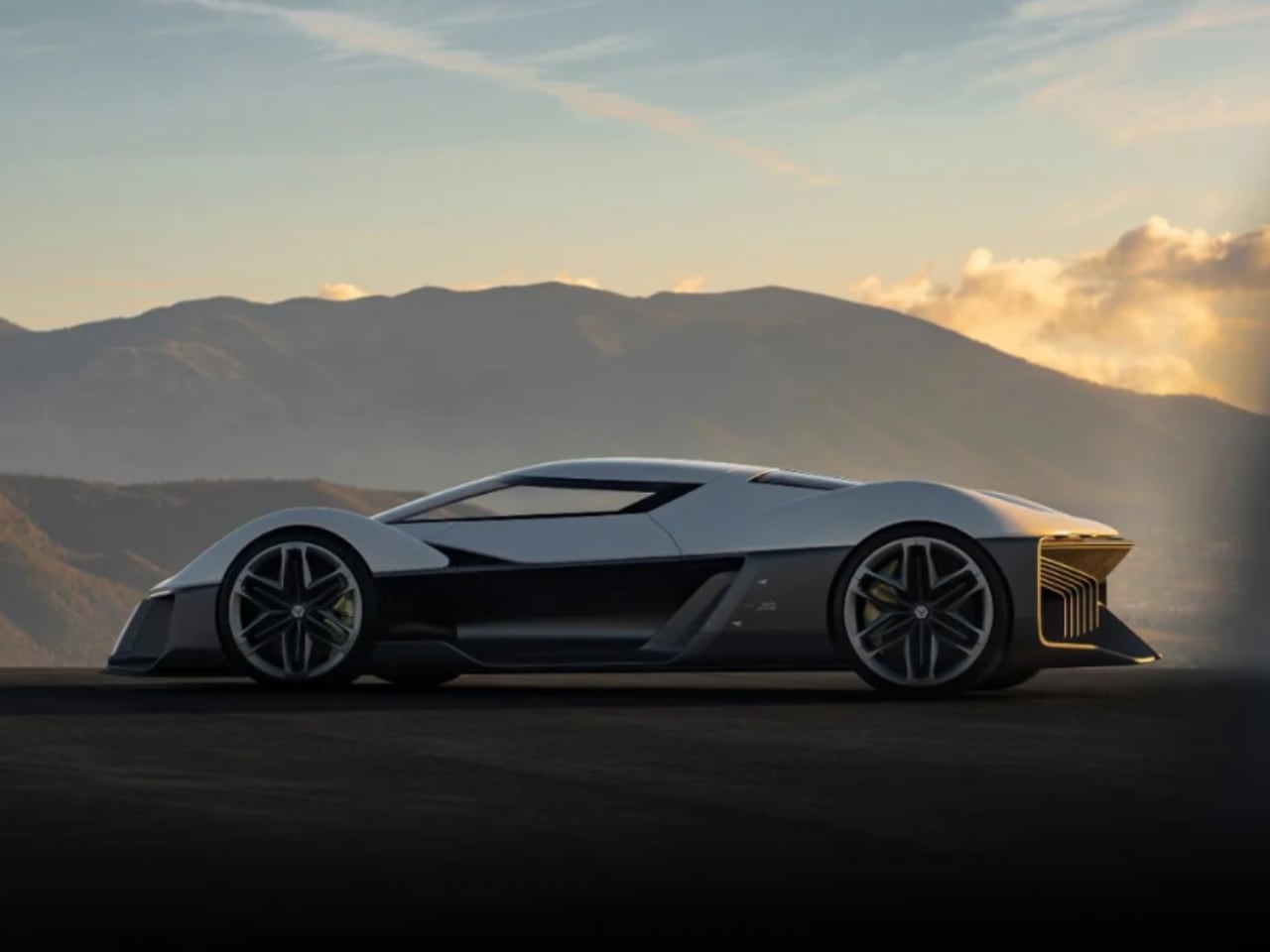

The move is more than symbolic. GM has planted this concept in European soil with deliberate purpose. This isn’t a car built for one continent. It’s aimed at drivers from Stuttgart to San Francisco, designed in collaboration with studios across the globe. It doesn’t pander. It announces.
Rewriting the Corvette Shape Language
What you see first is the roofline. The entire upper half of the vehicle tilts toward sculpture, not memory. Those gullwing doors aren’t there to echo a Mercedes or to turn heads for novelty. They exist because the body sits so impossibly low that they’re the most rational way in. And yes, they make a dramatic entrance without being theatrical.
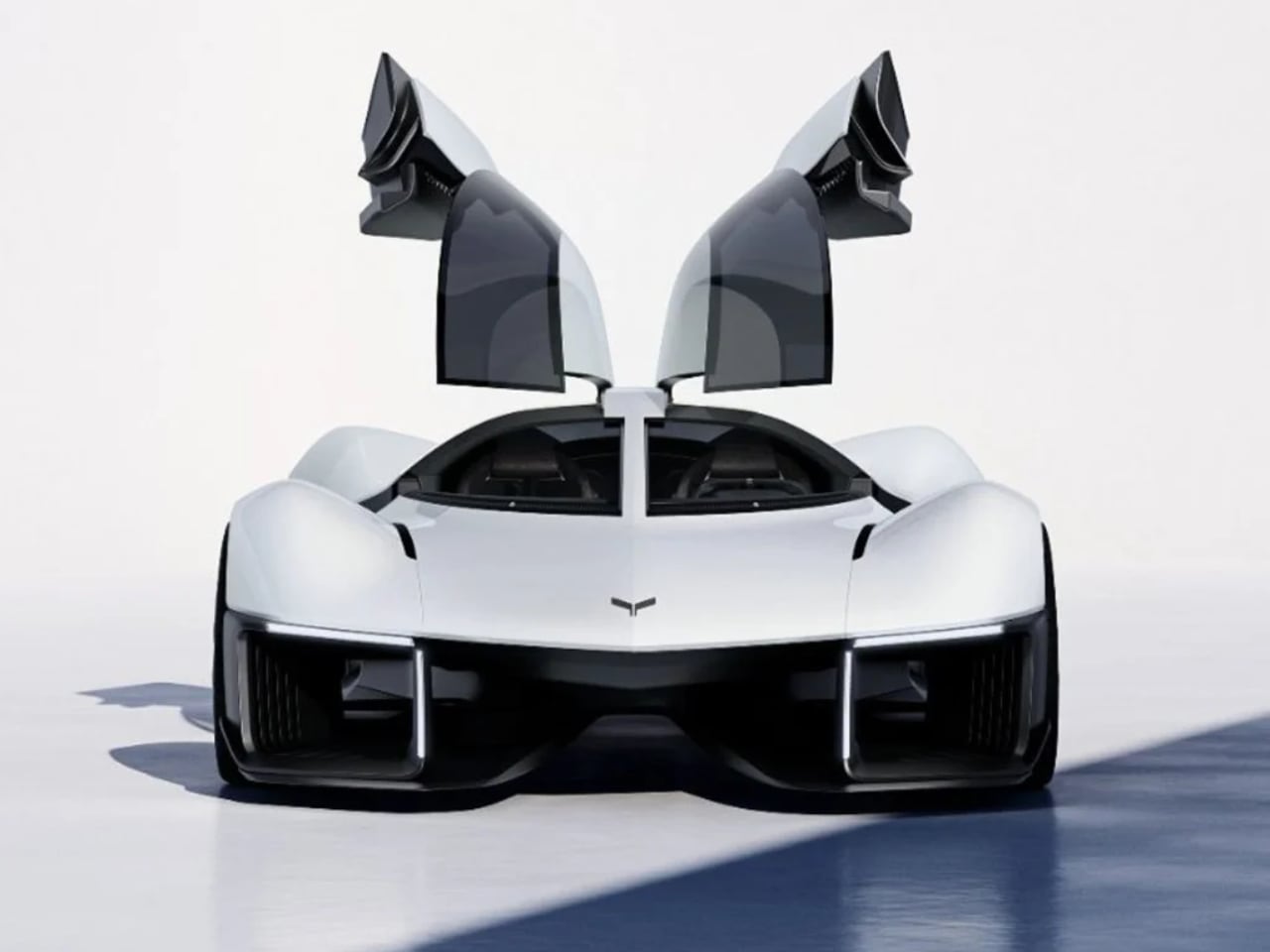

The front grille is gone. EVs don’t need them, and GM doesn’t pretend otherwise. In its place, light signatures define the fascia with a shape that still looks aggressive, but with intention. Sharp contours across the hood and fenders don’t decorate—they redirect airflow, visually and physically.
Out back, a single horizontal light bar stretches from edge to edge, tying in with active aero elements that morph based on driving conditions. It feels more like a low-slung hypercar than a traditional coupe. But the Corvette DNA lingers—most noticeably in the split rear window, a nod to the 1963 Sting Ray, done without dipping into retro design.


Battery, Torque, and the EV Transition
Underneath that form sits GM’s Ultium platform. Expect a tightly integrated battery chassis, structural rigidity baked into every panel, and a center of gravity pulled toward the Earth. The likely AWD layout and dual- or tri-motor setup translate to explosive torque and surgical traction. This isn’t an adaptation. It’s a rebuild.
The Corvette EV shares electric bones with the Hummer EV and Cadillac Lyriq, but application matters. Here, the same 800V architecture will be tasked with delivering speed between corners, not climbing rocks. Fast charging becomes a pit stop, not a feature.
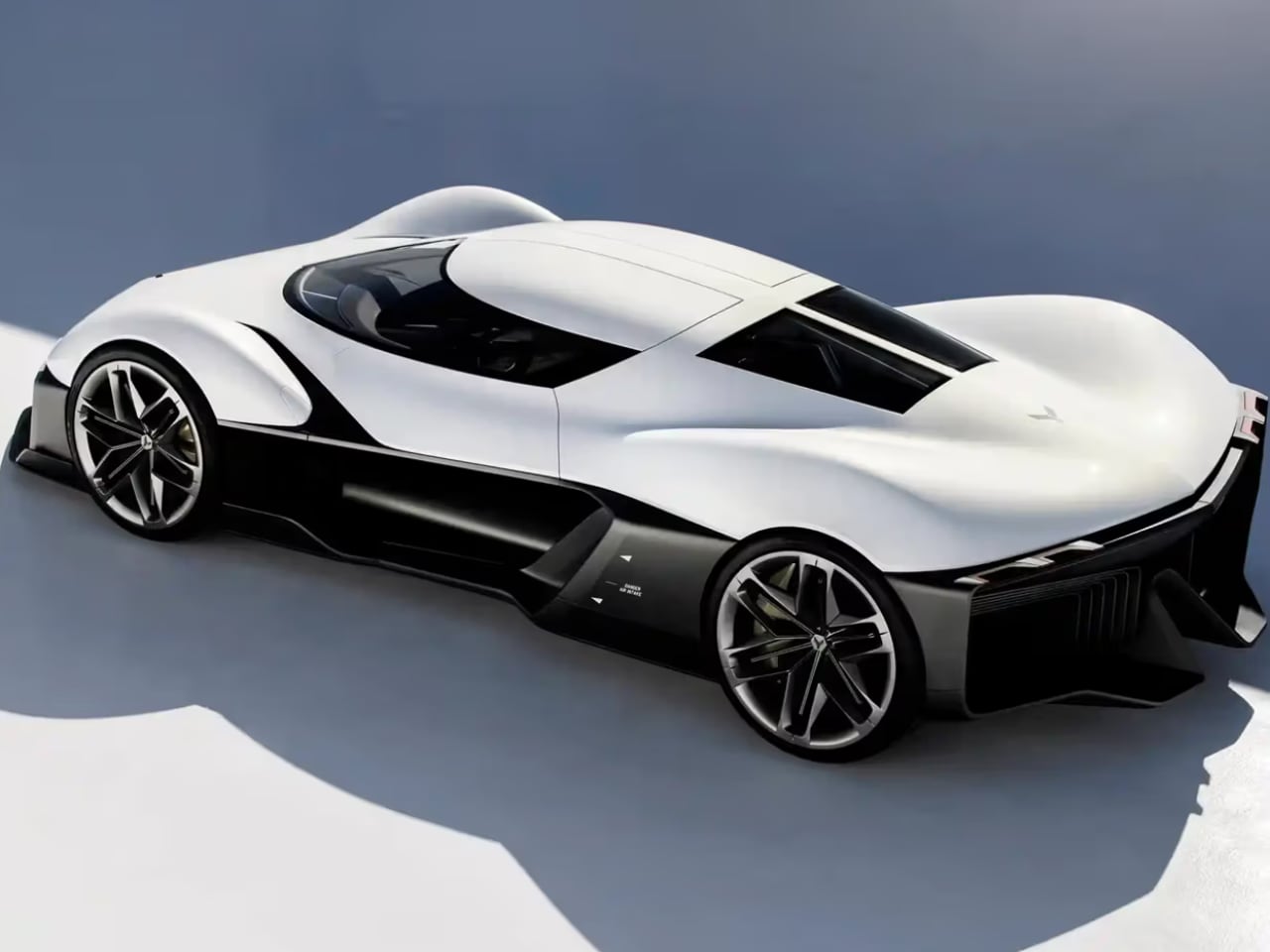

Cooling ducts carved into the body hint at motorsport roots. This isn’t a heat-trapped city cruiser. GM has shaped the chassis and airflow to handle repeated high-speed stress. Expect lessons pulled straight from Corvette Racing’s back catalog, translated into venting, ducting, and thermal control.
Driver-First Cockpit, Digitally Rewired
Inside the concept, analog thinking meets digital interface. A squared-off steering wheel cuts visual clutter and consolidates tactile inputs. You keep your hands planted at 9 and 3. Augmented reality overlays your data in motion—speed, g-force, track line—but only when needed.


Materials matter. Recycled composite trims don’t cheapen the cabin. They focus it. Upholstery swaps indulgence for precision. The carbon-backed seats don’t pad you in leather; they clamp you in position. The center spine of the cabin flows between seats, eliminating the transmission tunnel and adding usable space without drawing attention to it.
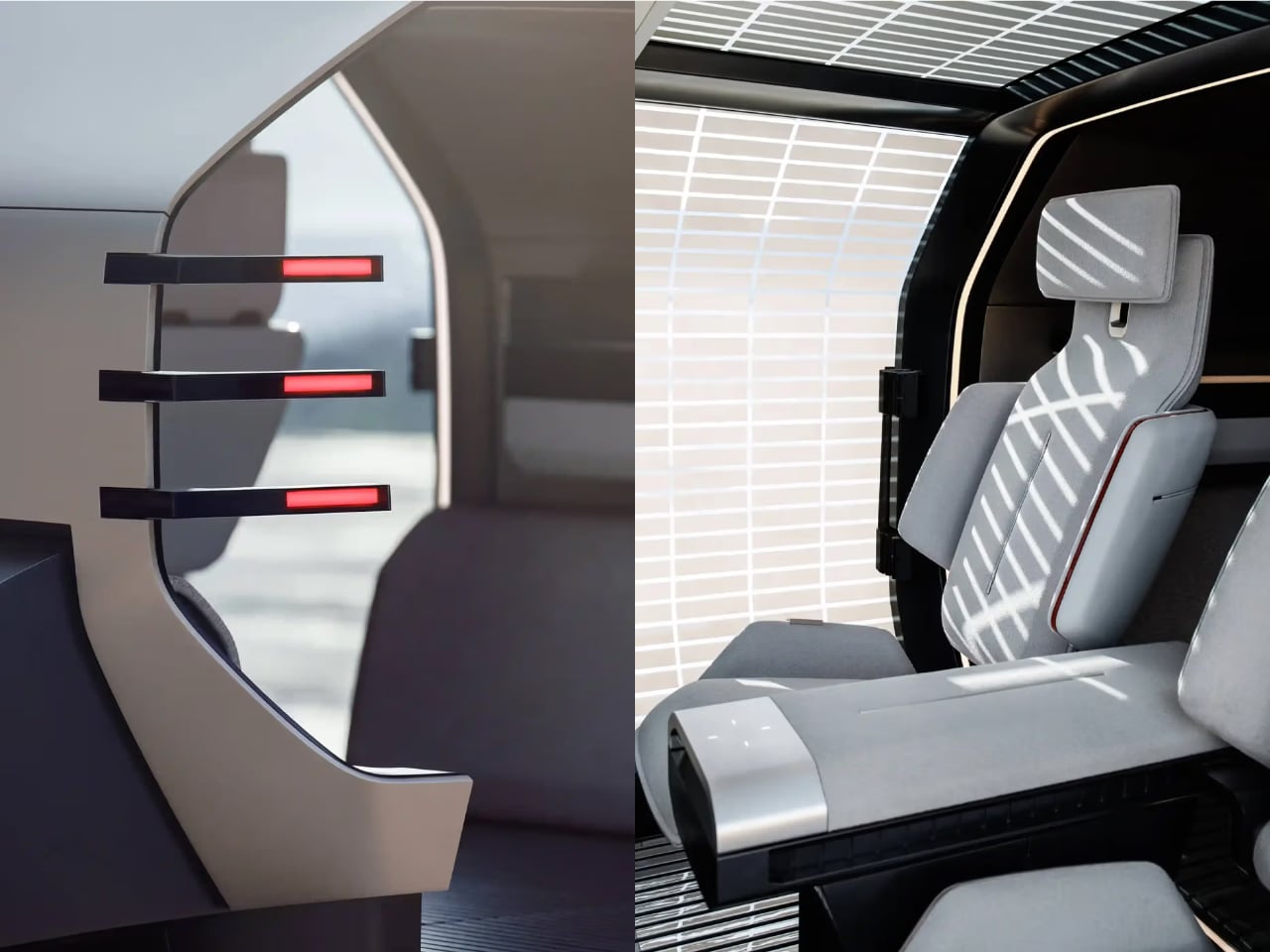

The layout is purposeful, the materials selected with restraint, and the controls placed for use under pressure, not for show.
The Corvette Goes Global
GM didn’t pick Royal Leamington Spa by accident. The UK design hub brings European proportioning and urban sensibility to a traditionally American platform. The lines are leaner. The angles more decisive. This design didn’t pass through Detroit untouched—it was shaped in dialogue with Seoul, Melbourne, Shanghai, and beyond.
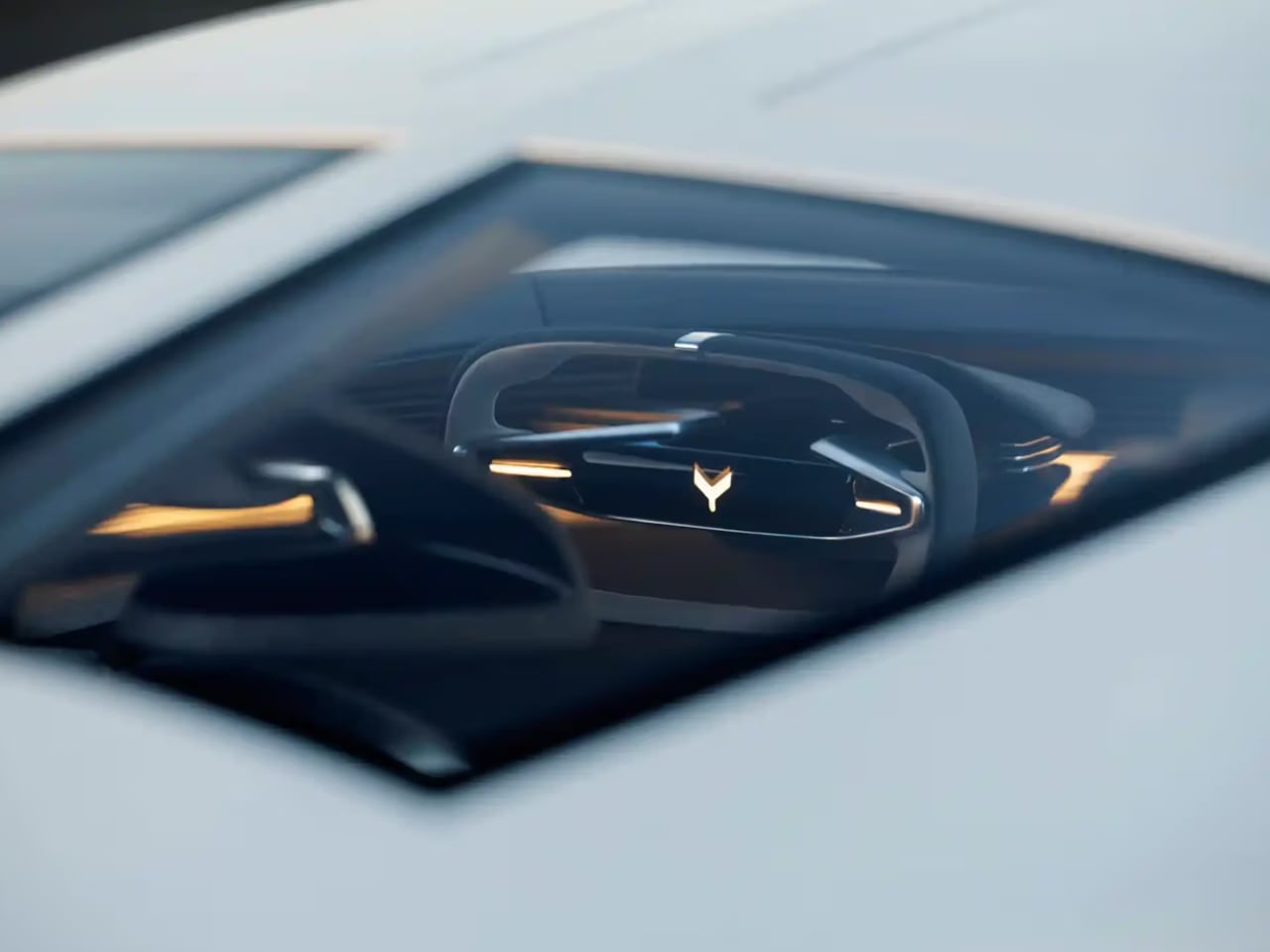

It also shows GM’s strategy: bring American icons into a design vocabulary that speaks internationally. Performance EVs are no longer niche in Europe. Regulations, infrastructure, and consumer appetite are already in place. This Corvette concept signals GM’s serious intent to sell electric performance on a global stage.
Where Concept Meets Reality
Don’t expect gullwings on the production model. They make a point here, but crash regs and cost constraints tend to win that argument. The same applies to some of the show-car detailing. But what matters is the architecture, and that looks production-ready.


GM hasn’t committed to a launch window, but the hybrid E-Ray was the opening act. A fully electric Corvette landing by 2026 isn’t off-script. When it arrives, it won’t be a re-skinned Stingray with batteries stuffed in. It’ll be a purpose-built machine.
The EV space is full of promises, missed timelines, and brand pivots. What this Corvette concept offers is a clear signal: GM plans to make performance EVs with teeth. And if the production car looks and drives anything like this concept implies, that future’s going to be loud—even if the engine isn’t.











